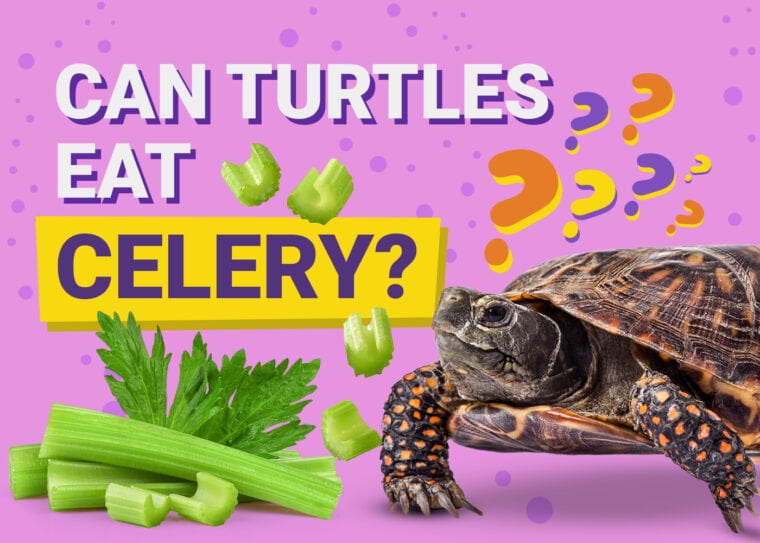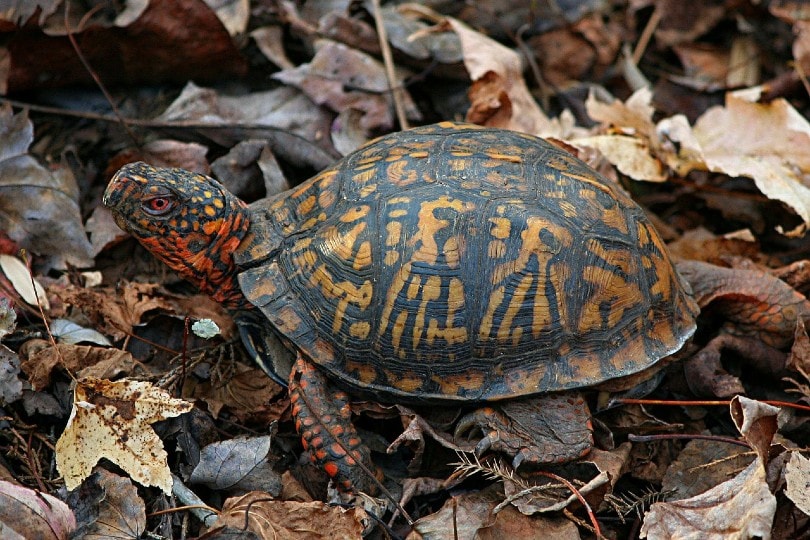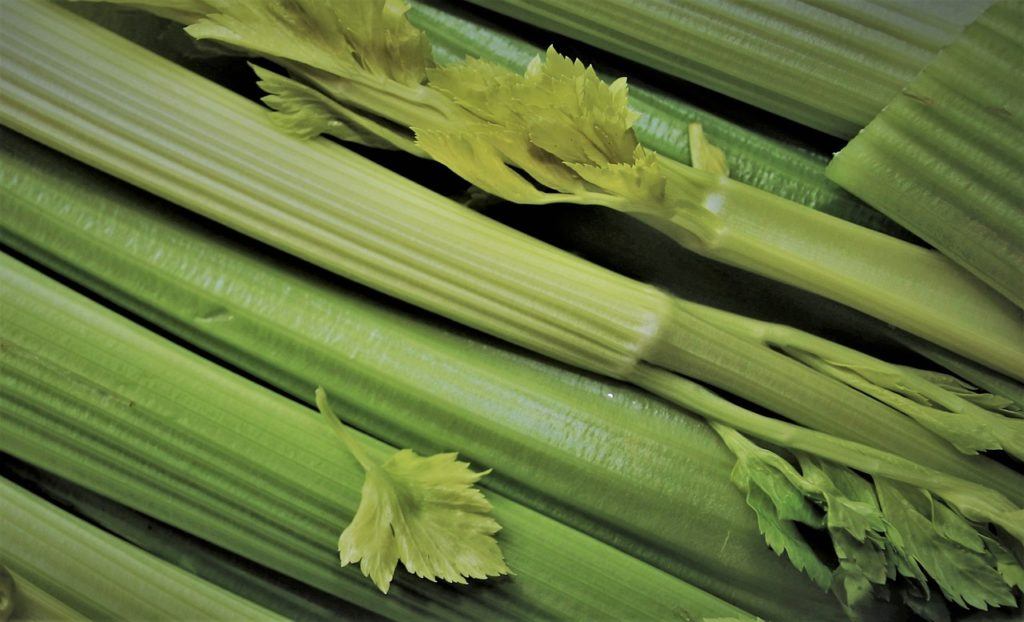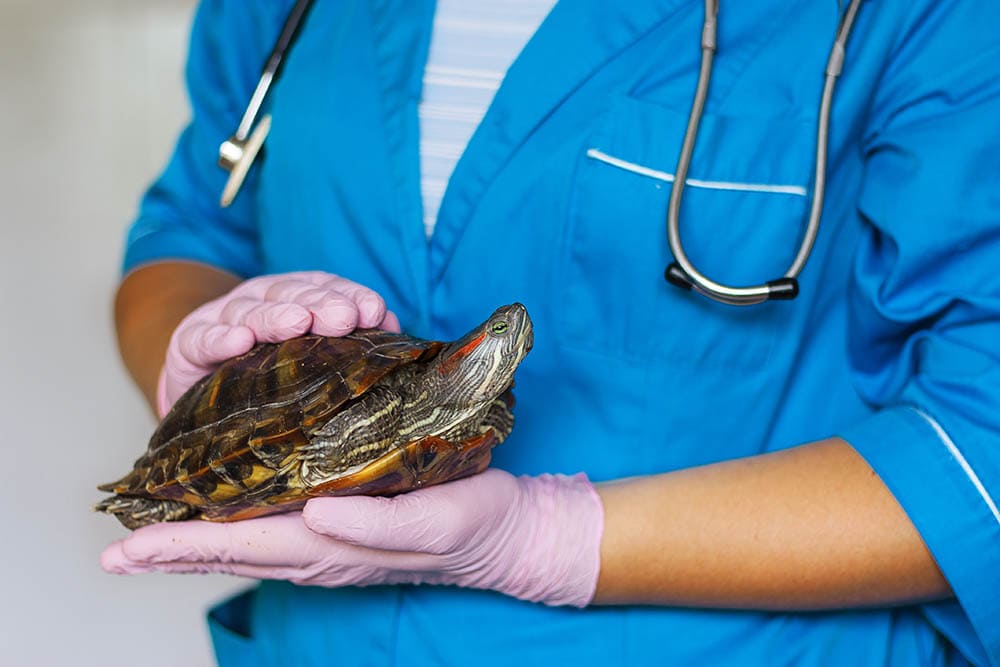
If you have a pet turtle, the food that you provide them is a major contributor to their welfare. Pet turtles can suffer greatly when they aren’t properly cared for and fed. For example, vitamin A and calcium deficiency are sometimes seen in pet turtles, and a low quality or inappropriate diet may contribute to these deficiencies.
This leads many pet turtle keepers to question what they’re feeding their shelled pals. One question often asked by concerned owners is if turtles can eat celery. The answer is yes, most healthy adult omnivorous pet turtles can eat celery.
Let’s delve into a turtle’s dietary needs, celery’s nutritional makeup, and other foods that you can give your turtle.
What Nutrients Does Your Pet Turtle Need?

As there are many species of turtles kept as pets, the focus of this article will be primarily on aquatic freshwater turtles, and the North American box turtles (of the genus Terrapene).
Most aquatic pet turtles are classified as omnivores. However, their dietary composition tends to largely depend on factors such as their age, health, environment, and the purpose of the diet itself. Though species variations are a very large contributing factor to a pet’s diet, generally speaking, aquatic turtles are more carnivorous when they are juveniles, and they tend to lean towards a more herbivorous diet as adults. Box turtles are similar, but tend to handle the inclusion of fruits in their diet better than other genera of turtles.
It goes without saying that veterinary input is very important to ensure that the meal plan you establish for your pet is sound and appropriate for them. Current literature advises a diet of around 50% animal or high-protein foods and the other 50% derived from plants for box turtles. The plant matter itself is recommended to be further divided as 75% vegetables and 25% fruit. 1
Aquatic turtle diets on the other hand are considered to be more complex, as they should be fed higher proportions of animal and high-protein foods as juveniles, with a gradual incorporation of vegetables as they get older. It is important to remember that these turtles can be classified as juveniles for a long time, sometimes over a decade. They are only considered adults once they are sexually mature, a feat which can take up to 15-20 years to happen for some species.
So, What’s the Deal With Celery?
Celery is safe for most aquatic turtles and box turtles to consume. The nutritional benefits of this vegetable can be better appreciated by examining its nutritional yield.2

Nutritional Benefits of Celery
Celery has many things going for it that justify its inclusion in your pet’s diet. For starters, it has an excellent calcium to phosphorus ratio of around 2:1. This is desirable as turtle diets should comprise a calcium to phosphorus ratio of 1.5:1 to 2:1 (calcium should be in higher amounts).
Adding to this appeal is the fact that celery is very low in sugar, and contains smaller amounts of other vitamins and minerals as well, which would definitely be beneficial for your pet. Finally, celery is quite high in water, and in moderation, this may help improve your pet’s hydration levels.
Nutritional Risks of Celery
Celery, like all foods, isn’t perfect and has some downsides to consider. The most important factor is the high water content, which means that overconsumption of this vegetable may lead to issues such as diarrhea. Therefore, moderation is important whenever it comes to offering your pet this vegetable.
At times, people prefer to offer their pet cooked vegetables. This is not an option when it comes to celery, because while raw celery is low in oxalates, cooking the celery increases its oxalate content considerably 2. Oxalates are undesirable in a turtle’s diet because they can interfere with calcium absorption and may be a risk factor for urinary tract issues and other undesirable health problems.
Nonetheless, the risk of cooked celery is very easily avoided by simply not cooking the celery and just opting for fresh, raw celery for your pet.
Preparing Celery for Turtles
The celery you offer your pet should be raw, fresh, and thoroughly washed. Depending on your pet’s size, you may have to cut the celery up into somewhat smaller pieces; however, keep in mind that many turtles enjoy holding onto food with their front legs and an overly small morsel might simply be ignored by your pet because it’s not as “fun” to eat.
It’s always best to offer your pet a very high amount of variety in their diet, and celery shouldn’t be the sole vegetable you offer them. It should instead be considered as one of many vegetables that you mix in their salad. This not only provides enrichment but also ensures your pet has a greater chance of receiving all the nutrition they require.

Other Fruit and Vegetable Choices for Turtles
The following foods can also be considered as options for your pet turtle.
Please note that these lists aren’t exhaustive. Once again, it is very important to thoroughly discuss your pet’s nutritional needs with your veterinarian. Carnivorous turtles do not benefit from fruits and vegetables in their diet the same way omnivorous or herbivorous turtles do too; in some cases, plant-based foods can be very detrimental to them.
Final Thoughts
Most healthy, adult omnivorous pet turtles can safely eat celery. However, moderation and variety are two factors to consider when it comes to preparing a fresh produce mix for your pet. It is important to also note that your pet’s diet is continually changing and therefore, veterinary input should always be a step to ensure that your pet is receiving nutritionally adequate and appropriate foods. A good diet is the key to a healthy, long-living pet turtle.
Related Reads:








